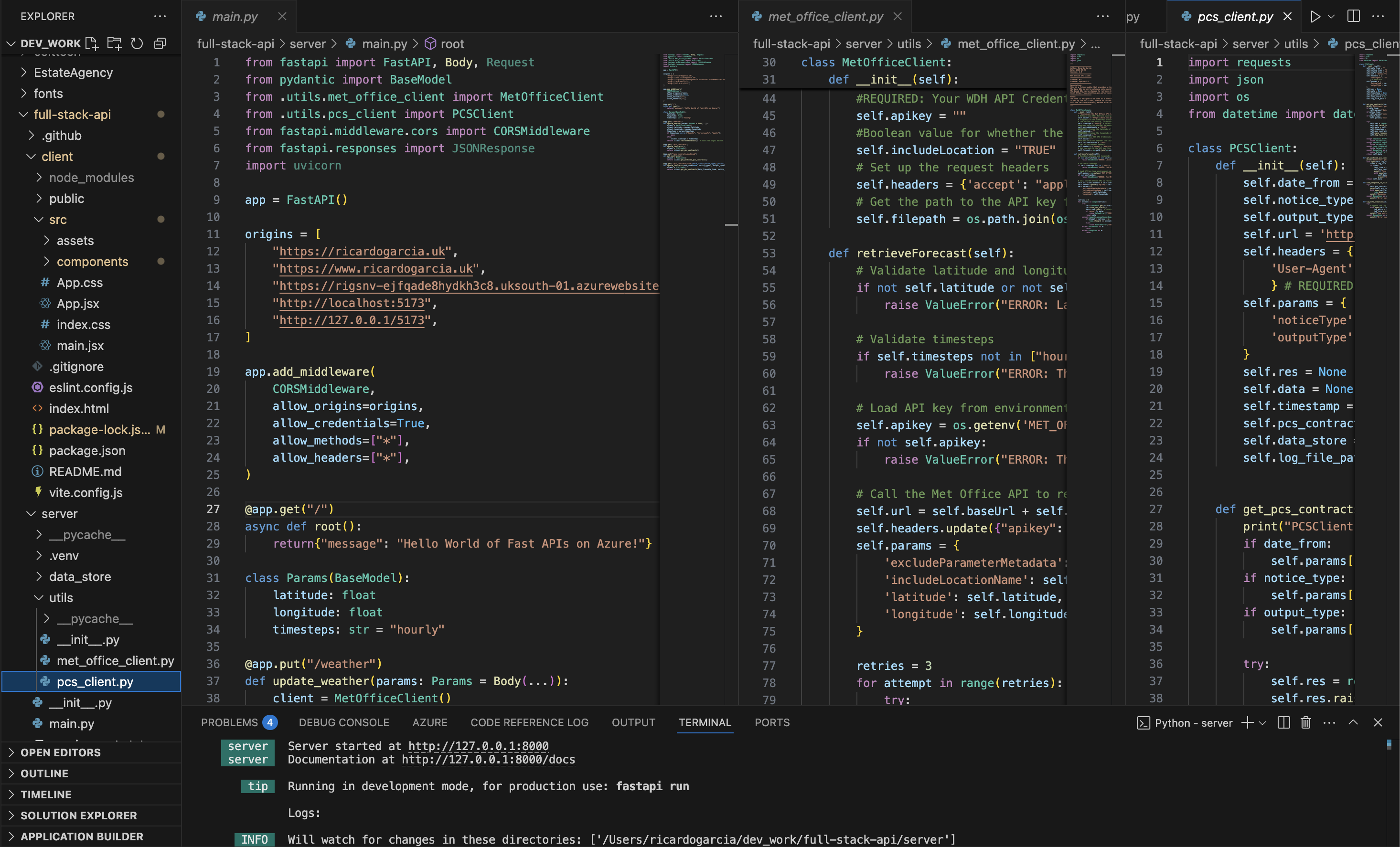Celt Tech
Full Stack API
A full-stack web app to manage external services.

A Screenshot of the Code
Project Overview
This project is a comprehensive full-stack application designed to streamline the management of external service APIs. The primary goal was to create a centralised platform that decouples the services layer, making it an independent and easily maintainable component that efficiently distributes loads, keeps secrets safe and easily scales. This solution can be quickly integrated into any distributed system, solving the common challenge of managing multiple, disparate API services.
As the sole creator, I was responsible for all aspects of the project, from initial concept and design to development, deployment, and maintenance.
Key Features
Decoupled services layer
The services layer is decoupled from the frontend interface, allowing for independent management and scaling. This modular design enables easy integration into any distributed system, enhancing maintainability and flexibility.
Key Outcomes
Decoupled Services Layer
The project successfully created an independent component for the services layer. This modular design allows for easy management, maintenance, and efficient integration into any distributed system, enhancing scalability and reusability.
CI/CD-Ready Environment
A robust development environment was established for Continuous Integration and Continuous Delivery (CI/CD). It features secure secrets management, automated testing, and build-and-deploy pipelines, leading to a highly efficient and reliable development workflow.
Technology Stack
languages
Python
JavaScript
HTML/CSS
YAML
libraries
FastAPI
Pydantic
Uvicorn
Requests
React
frameworks
TailwindCSS
Vite
tools & platforms
VS Code
Git/GitHub
Azure
GitHub Actions
GitHub Secrets
databases
MariaDB
PostgreSQL
Development Journey
A primary challenge from the outset was the decision to use technologies I had no prior experience with, specifically FastAPI and Microsoft Azure. The goal was not just to build a project but to learn and implement these new tools in a production-ready environment.
Solution: Hands-On Learning and Documentation
My strategy was to dive directly into the official documentation. I followed the "get started" tutorials for both FastAPI and Azure, completing their introductory projects. This approach proved highly effective. It allowed me to quickly understand the core concepts, methodologies, and "mindset" behind each technology. More importantly, it gave me immediate, hands-on experience not only with the tools themselves but also with how to effectively use their documentation for problem-solving—a critical skill for any developer. This foundational knowledge was instrumental in successfully building and deploying the application.
One of the significant challenges was integrating multiple external APIs, each with its own data format and authentication requirements. This complexity required careful planning and execution to ensure seamless data flow and consistency across the application.
Solution: Modular Design and Error Handling
To address this, I implemented a modular design that allowed for easy integration of each API. Each module was responsible for handling specific API calls, data processing, and error management. This approach not only simplified the integration process but also made it easier to maintain and update individual components as needed.
As the application was designed to handle multiple API calls and process large volumes of data, ensuring high performance and scalability was a critical challenge. The goal was to create an application that could efficiently manage high traffic and provide a smooth user experience.
Solution: Optimizing Code and Leveraging Asynchronous Capabilities
To achieve this, I focused on optimizing the codebase and leveraging the asynchronous capabilities of FastAPI and Uvicorn. This included implementing efficient data processing algorithms, minimizing response times, and ensuring that the application could handle concurrent requests without performance degradation. Additionally, I utilized caching strategies to reduce the load on external APIs and improve response times for frequently accessed data.
Deploying the application and setting up a continuous integration pipeline was a complex task. The challenge was to ensure that the deployment process was smooth and that updates could be rolled out efficiently.
Solution: Using GitHub Actions for CI/CD
I utilized GitHub Actions to set up a continuous integration and deployment pipeline. This allowed for automated testing, building, and deployment of the application, ensuring that any changes made to the codebase were quickly reflected in the production environment.